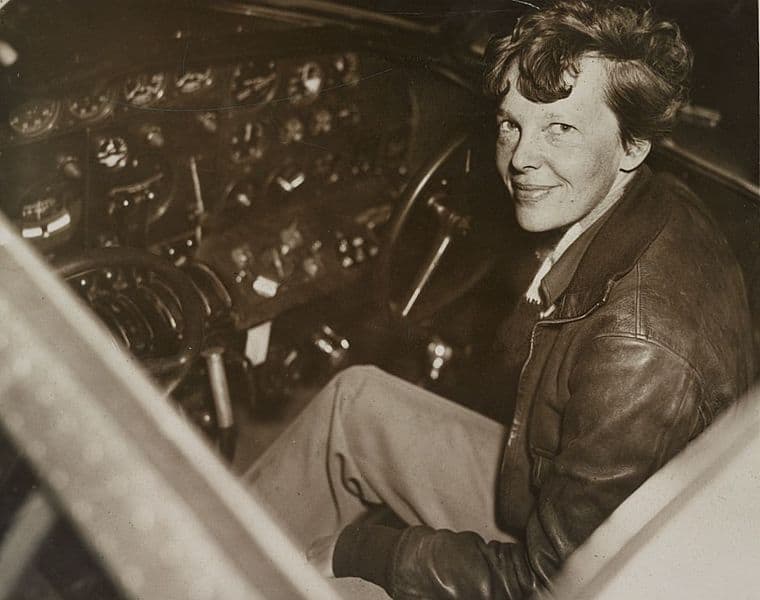Amelia Earhart was the first female aviator to fly solo across the Atlantic, an achievement that she accomplished in 1932. Prior to that epic flight, she was the first female to cross the Atlantic by air, as a passenger in 1928. In life, she was frequently controversial, over her feminist views, her seemingly open marriage, and her political positions. Earhart emerged from a troubled childhood to serve as a nurse during the First World War, in Toronto, before her own country entered the conflict. Stricken during the Spanish flu pandemic, she developed pneumonia, underwent surgery on her sinuses, and suffered from sinus problems for the rest of her life.

Her famous last flight, during which she and her navigator, Fred Noonan, vanished in the far Pacific, was not all that earth-shaking. By 1937 established commercial aviation routes spanned the globe. Noonan plotted several of the routes during his career as a navigator for Pan American World Airways. One such route was the China Clipper, San Francisco to Manila, via Honolulu, Midway Island, Wake Island, and Guam. Earhart’s round-the-world flight was planned to generate publicity for a new book she planned to write, and for the navigation school, Noonan hoped to start in San Francisco, having retired from Pan Am. They vanished and became legends, subjects of an unending mystery. Here is some of their story.
1. Earhart began flying in the early 1920s

In 1919 Amelia Earhart enrolled in New York’s Columbia University, intending at first on continuing her medical career, which began with nursing training in World War I. She did not complete her studies, moving to California the following year, where she lived with her parents. The latter had a difficult marriage, with financial difficulties exacerbated by her father’s heavy drinking. On December 28, 1920, her father paid for Amelia’s first flight, a ten-minute ride in an aircraft flown by Frank Hawks, who later gained fame as a racer. Earhart took several jobs, including as a stenographer, and a truck driver, to raise the money to support flying lessons.
The following summer, her lessons having gone well, Earhart purchased her first aircraft, a Kinner Airster biplane. Its bright yellow paint scheme led her to name the aircraft “the Canary”. In 1922 Earhart reached the altitude of 14,000 feet in the Canary, a world record for a female pilot. In May, 1923, Earhart received her pilot’s license, one of only sixteen women to have done so. One of them was her flight instructor, Anita Snook. In the mid-1920s a series of financial misadventures destroyed her family’s fortune, and the shock was the final blow to her parent’s marriage. They divorced in 1924, and Earhart drove her mother to Boston, on a lengthy road trip which took several months.

